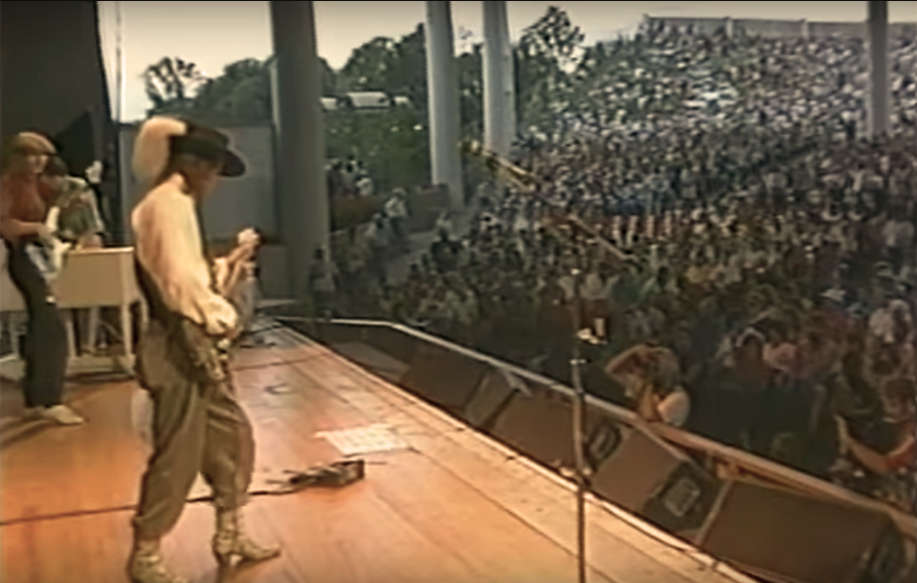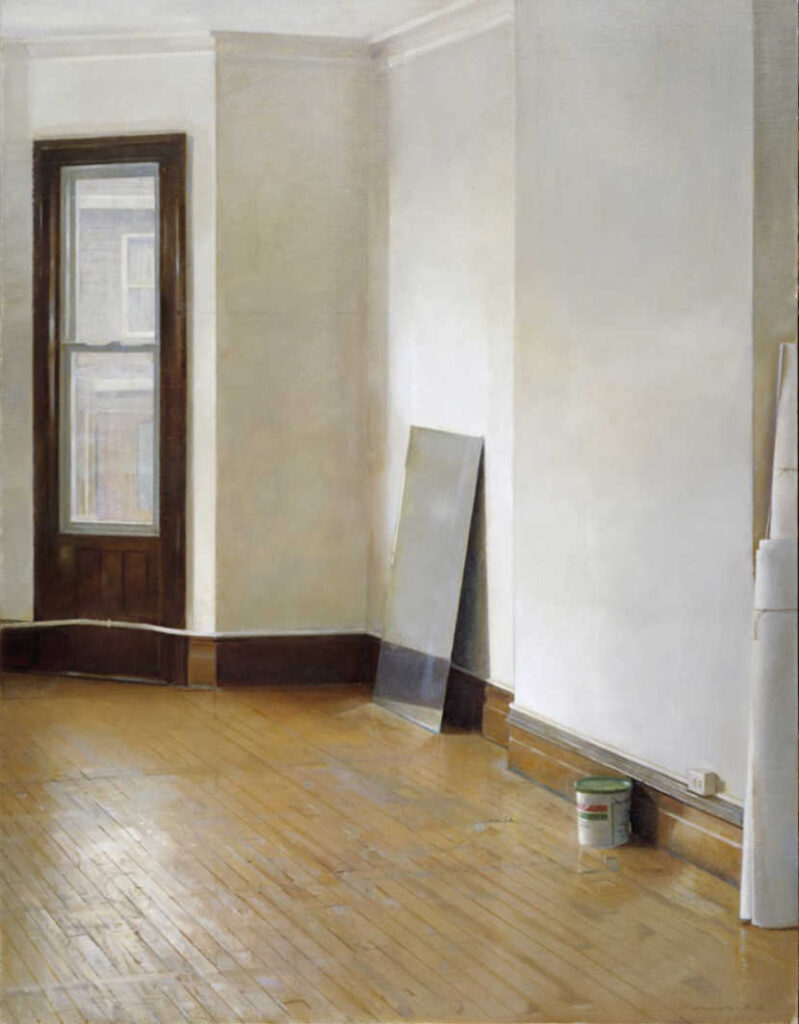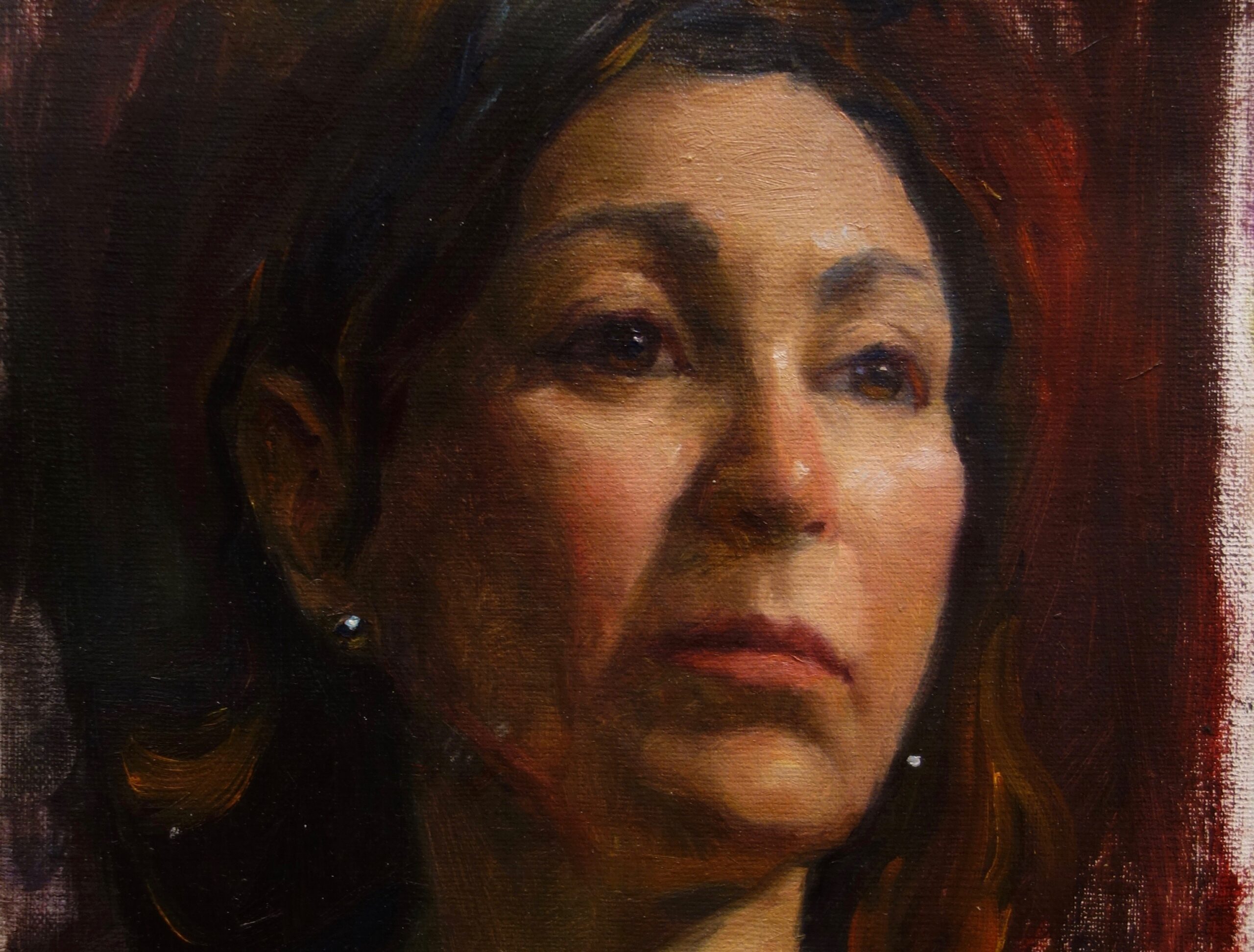
You can choose courage or you can choose comfort, but you can’t have both.
~ Brene Brown
Artists can be reclusive geeks.
I don’t mean the weird, dysfunctional type as portrayed by Hollywood.
But one with a clear handicap when it comes to painting professionally. Stage fright, i.e. exhibition fright, is the big one.
Because as helpful as Facebook, Instagram, and individual websites are, exhibiting is still a must for any artist wanting to turn pro, or at least paint like one.
It can also be nerve-racking. Exhibiting for the first time, especially, can plague you with all sorts of wild phobias…
What if nobody likes my work?
What if nobody notices my work?
What if the world discovers I’m a talentless phony?
OK, deep breath. It’s perfectly natural to stress over how your work is received.
And I won’t join the chorus that glorifies fear because it sharpens the mind, quickens the reflexes, blah, blah. Fear sucks and it feels dreadful. But we can’t let it paralyze us or stop us from contributing to the world.
Because getting your art out of the studio and in front of an audience forces you to grow in ways you can’t imagine, especially if you’re procrastinating about exhibiting someday.
And, as with everything else, you’ll have to start somewhere. Which is usually before you’re ready and almost always at the bottom.
Playing Small is Riskier than it Seems

Whenever I see this shot of Stevie Ray Vaughan in Nashville, I imagine him twenty years younger, practicing in the basement by himself or with friends.
As his audience grew, so did his skills and his stage presence, until he could perform with supreme self-confidence before a crowd the size of a small city. A phenomenal trajectory that didn’t happen overnight. Each step, from basement to nightclub to arena, was more daunting than the last.
Now think of all the potentially great guitarists who never left the “safety” of the basement.
Yes, putting yourself out there exposes you to both the actual and the wannabe critics of the world. But it’s a small price to pay for moving up. And playing small usually feels safer in retrospect. Once you expand and grow into it, the next level up feels much like the previous one.
You’ll Never Be Ready
My first blog posts reached between twenty-five and fifty readers each. Admittedly, the posts were lame, but I was thrilled with any result.
Because I didn’t feel I had the ability, or even the right, to publish anything, and never dreamed there would be a response. Which also meant there wasn’t a thing to lose.
A few years later, one of the posts reached 28,000 readers and received 6,500 social media shares.
Modest, next to the millions of views that top bloggers are getting. But still a lot of eyeballs for a new-ish blogger. Today, getting two thousand readers for a post is a disappointment. And my hand still trembles whenever it hovers over the publish button.
The point is that there’s no right time to jump in. If you wait until you’re comfortable, the energy has already left the situation and it’s probably too late.
So the first thing to do is to enter some small shows. Don’t expect much attention, good or bad, but do expect to make a boatload of mistakes. It’s OK, you’re learning at this stage, and setting yourself up for success.
Juried Shows are Everywhere
and Available to Everyone
Let me go on record and say that most juried shows are uneventful.
Few people attend them, few critics review them, and few collectors buy from them. And because of the sheer volume of entries, chances of getting in at all are slim. Once the work is hung, every inch of wall space is crammed with a hodgepodge of styles, so it’s hard to stand out.
But none of that matters.
The goal here is to get some exhibitions, and ideally some awards, on your resume. Gallerists and collectors want proof that your work has been vetted, and the more you can give them, the better.
Realize that after viewing hundreds of entries–most of them excruciatingly dull–jurors tire and they lose focus. So how do you want them to react when your work pops up on the screen?
That’s right, you want them to rejoice over having something to look at.
So go for strength over subtlety when choosing your submissions. Make sure they have plenty of bang to them, so they leap off the projector screen and wake everybody up.
Don’t try to cover all bases by submitting a little of this and a little of that. Choose a suite of works with a common theme—three figures, three landscapes, etc. When viewed as a group, each piece will strengthen the others and make a powerful impression.
And remember, rejection is unavoidable. If you’re accepted to three shows out of ten, then you’re doing very well.

Artists Who Don’t Exhibit Are More Vulnerable
This isn’t meant to sound critical, but I find that artists with exhibition records tend to have a thicker skin and a sense of humor about their work. Artists who don’t exhibit seem to take criticism, and rejection, more personally.
And I’ll be straight with you…it’s likely that your first rejections will be painful and you might get angry at the jurors. The next few will be annoying, and, with experience, you’ll be able to laugh the others off. But none of that will happen if you isolate yourself.
Funny, but a great way to handle rejection is to embrace it completely. So when it happens, go all in and collapse on the couch with your favorite junk food. Let yourself feel all the pain for about five minutes. Punch a pillow if you have to—then get off the couch and enter another show.
Final Thought—
Aim, Fire, Ready
Putting your artwork on the line is one of the most courageous things you can do. It will energize you. It will expand you. It will change your artistic self-image.
You’ll feel more professional, even if you’re not selling yet. You’ll get clear on how to improve. You’ll meet other artists and make friends.
Or maybe you’d rather avoid all the hassle and just paint. Guess what…we all want to just paint.
But just painting isn’t a long-term strategy for growth. Competition drives so much of human endeavor; without it, we’d all be living in mud huts and pumping water out of the ground.
So isn’t it time to move out of the hut?
Time to start really learning?
Time to ignore that insufferable critic living inside your head?
You have a unique vision. If you didn’t, you wouldn’t be an artist to begin with.
Be generous with your art. If sharing it inspires just one person, then it’s more than worth the trouble. Especially if that person is you.
Christopher Gallego (@cdgallego) is a painter and blogger who teaches at the Art Students League of New York.




